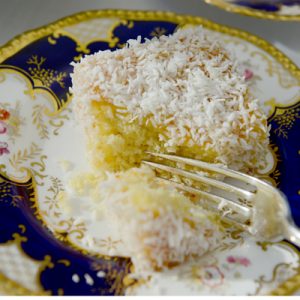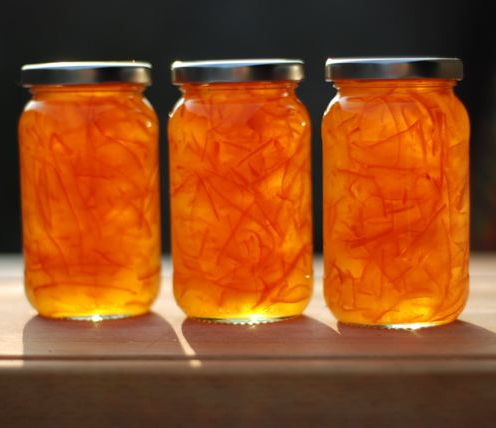My stocks of jars have been replenished and I like many marmalade makers experience a happy sense of satisfaction, as I put away the last jar into an almost full cupboard. The majority of the jars are bright with thin shreds of peel evenly distributed throughout the marmalade. They were all made using Ave Maria’s organic Seville oranges, using an award winning recipe, with the peel shredded by hand, a skill handed down through generations. Marmalades made by mincing the peel or even omitting it altogether are less pleasing to the eye and the palette.
This year I have a few different looking jars due to making marmalade by the whole fruit method. I demonstrated it as part of a Marmalade Day at the Women’s Institute Cookery School, at Denman College in February. Students were able to see the difference between the whole fruit method and the one they used to make their marmalades, the hand cut method. As preparation, my attempts at making it before the day had mixed results and one batch failed to set, a first for me.
The fruit was cooked whole in water for a couple of hours until tender then cut up into strips. As the fruit was soft and squishy, getting even strips of fruit was a challenge. The pips were separated and boiled briefly to extract their pectin, then discarded. Warmed sugar was added to the fruit and boiled to a set. As all of the fruit was used, the final colour of the marmalade I made was cloudy and the flavour more bitter and less fragrant than my favourite recipe with its balanced flavour. On toast the appearance of marmalade made by the whole fruit method (on the right in the image) is nearly as attractive.
The characteristic gel I usually get with the hand cut method was also different and the marmalade took slightly longer to set. This was due to the fruit being cooked whole, not sliced and soaked overnight which allows the release of pectin to start, well before the mixture is cooked. In addition, cutting the peel thinly before it is cooked maximises the release of pectin. Over the years I have seen clear evidence of this when I am teaching, often people cut their peel thicker than I suggest and invariably their marmalade takes longer to set. Why is this important? I am sure we all enjoy the smell of marmalade when boiling to a set, but by generating that aroma we are boiling off some of the fragrant flavour, so the shorter the time to achieve a set, the better the flavour.
The whole fruit method is a popular method of making marmalade, but I prefer the slightly longer but more rewarding hand cut method. However, the jars made by the whole fruit method, with their distinctive bitter flavour of Seville oranges will be suitable to use in baking recipes, as consistency and colour are perhaps not as important as the bitterness of the flavour.
 Cakes with marmalade are a popular choice and one of my favourite Make and Bake recipes is Marmalade Lamingtons. Originally from Australia, Lamingtons are attributed to Lord Lamington, Govenor of Queensland from 1896-1901. Traditionally they are served as a dessert, cubes of sponge cake dipped in jam and coated with chocolate icing and coconut. In my version, the cubes are dipped in marmalade and coated with coconut. The recipe is in my Kindle eBook Marmalade: Make and Bake.
Cakes with marmalade are a popular choice and one of my favourite Make and Bake recipes is Marmalade Lamingtons. Originally from Australia, Lamingtons are attributed to Lord Lamington, Govenor of Queensland from 1896-1901. Traditionally they are served as a dessert, cubes of sponge cake dipped in jam and coated with chocolate icing and coconut. In my version, the cubes are dipped in marmalade and coated with coconut. The recipe is in my Kindle eBook Marmalade: Make and Bake.

